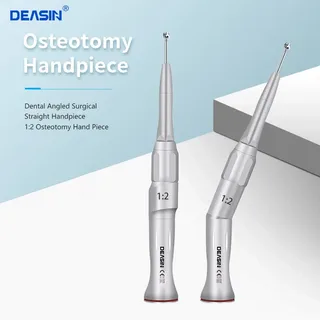The osteotome, a precision surgical instrument, plays a vital role in orthopedic and dental procedures. Whether you’re a medical professional, student, or simply curious about surgical tools, this comprehensive guide will walk you through everything about osteotomes.
Also Read: Wartenberg Wheel
Table of Contents
- What Is an Osteotome?
- History of the Osteotome
- Anatomy of an Osteotome
- Types of Osteotomes
- How Is an Osteotome Used?
- Osteotome vs. Chisel: What’s the Difference?
- Applications in Orthopedics
- Role in Dental Surgery
- Advantages of Using Osteotomes
- Safety and Handling Tips
- Choosing the Right Osteotome
- Cleaning and Maintenance
- Where to Buy Osteotomes
- Frequently Asked Questions
What Is an Osteotome?
An osteotome is a surgical tool used to cut or shape bones. Unlike saws, osteotomes rely on precise force and sharp edges, making them ideal for controlled bone alterations in surgeries.
History of the Osteotome
The osteotome has roots in ancient surgical practices, evolving over centuries to become the advanced tool used in modern medicine. Its design and application have improved significantly, enabling precision and efficiency.
Anatomy of an Osteotome
The osteotome consists of:
- Blade: Sharp, flat edge used to cut or reshape bone.
- Handle: Designed for a secure grip, often ergonomic for long surgeries.
- Material: Typically stainless steel, ensuring durability and sterility.
Types of Osteotomes
- Straight Osteotome: For general bone cutting.
- Curved Osteotome: For shaping and specialized areas.
- Serrated Osteotome: Provides extra grip for tough bones.
- Dental Osteotome: Smaller, designed for precision in oral surgeries.
How Is an Osteotome Used?
Surgeons use osteotomes to make controlled bone cuts. A mallet is often used to apply force, ensuring precision without damaging surrounding tissues.
Osteotome vs. Chisel: What’s the Difference?
While both tools cut bones, osteotomes have sharper, thinner blades, ideal for precision, while chisels are bulkier and used for heavier bone removal.
Applications in Orthopedics
Osteotomes are indispensable in orthopedic surgeries, such as:
- Correcting bone deformities.
- Preparing bones for implants.
- Harvesting bone grafts.
Role in Dental Surgery
In dentistry, osteotomes are used to:
- Elevate the sinus floor during implant placement.
- Expand narrow ridges for better implant support.
- Shape and contour jawbones.
Advantages of Using Osteotomes
- Precision cutting.
- Minimal damage to surrounding tissues.
- Versatility in various medical fields.
Safety and Handling Tips
- Always sterilize before and after use.
- Ensure a firm grip to avoid slips.
- Use appropriate force to prevent accidental damage.
Choosing the Right Osteotome
When selecting an osteotome, consider:
- Surgical needs (orthopedic, dental, etc.).
- Blade type and size.
- Material quality for durability.
Cleaning and Maintenance
- Clean with warm water and surgical-grade detergent.
- Sterilize using an autoclave.
- Store in a dry, clean environment to prevent rust.
Where to Buy Osteotomes
Osteotomes can be purchased from medical supply stores or online platforms specializing in surgical tools. Ensure they meet medical standards for quality.
Conclusion
The osteotome is a cornerstone in surgical procedures, offering precision and reliability. Whether in orthopedic, dental, or cosmetic applications, this tool remains an essential asset for surgeons. Understanding its uses, types, and maintenance ensures optimal performance and safety.
Also Read: Auctane Shipping
Frequently Asked Questions
Q1: What materials are osteotomes made from?
High-grade stainless steel is commonly used for durability and sterilization purposes.
Q2: Are osteotomes reusable?
Yes, with proper cleaning and maintenance, osteotomes are reusable.
Q3: Can osteotomes be used in cosmetic surgery?
Yes, they are often used in facial reconstructive surgeries to reshape bones.
Q4: What is the difference between a dental osteotome and a standard one?
Dental osteotomes are smaller and designed for precision in oral procedures.
Q5: How long does an osteotome last?
With proper care, an osteotome can last for years without losing its effectiveness.





